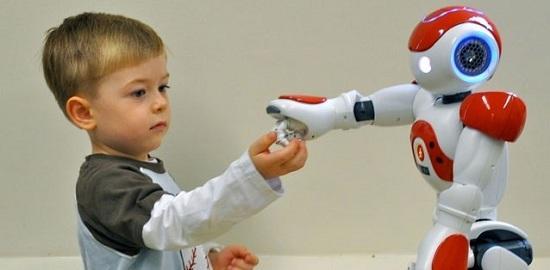AI algorithm decoding baby brain scan predicts autism
According to IEEE Spectrum, 22 years ago, researchers reported for the first time that the brains of adolescents with autism spectrum disorders will increase in size. In the following years, studies on adolescents and young children showed that this type of brain "crazy" phenomenon mainly occurs during the patient's childhood. Now, the research team at the University of Northern California has found that changes in brain development associated with autism are minimal in infants who are only 6 months old. Deep learning algorithms can use this data to predict whether a child can be diagnosed with the disease within 24 months.
In high-risk children with autism, this algorithm can accurately predict diagnosis with an accuracy of up to 81%. Compared with the behavioral questionnaire diagnosis method, the performance of the algorithm is obviously better. The information generated by the former can only be used as a basis for the diagnosis of early autism, and the accuracy rate is only 50%. Heather Hazlett, a psychologist and brain development researcher at Northern California University, said: "Deep learning algorithms perform more than traditional diagnostic methods and can be used in smaller children."
As part of an infant brain imaging study, the U.S. National Institutes of Health funded early brain development studies for autism patients. The research team conducted a total of 106 infants whose elder brothers or sisters had autism and 42 infants. There is no family history of autism. Researchers scanned the brains of each baby. For those who are only 6 months, 12 months, and 24 months old, this work is not easy.
In 6 to 12 months of age, researchers did not see changes in their overall brain development. But in children at high risk for autism and later diagnosed with autism, they found a significant increase in the surface area of ​​the brain. This increase is associated with increased brain volume in infants 12 months to 24 months old. In other words, in autistic infants, by 12 months, their brain development is first focused on surface area expansion, and by 24 months, the entire brain volume increases.
Researchers also conducted behavioral assessments of 24-month-old infants. At this point, these children have been able to demonstrate the iconic behavior of autistic patients, such as lack of social sex, delay in the development of language ability, repeated body movements. The researchers noticed that the more the brain grows, the more severe the child’s autism symptoms are. Although new findings confirm that brain changes are related to autism that occurs in infancy, researchers have not stopped research.
Working with computer scientists at the University of Northern California and Charleston College, the research team developed a deep learning algorithm and trained it with brain scans to test whether it could use early brain change data to predict which infants could be diagnosed with autism later in life. This algorithm performs very well, using only three variables, namely brain surface area, brain volume and gender (boys are more likely to suffer from autism), and the algorithm can accurately predict 4/5 cases of autism. Hazlitt said: "This is already quite awesome, much better than behavioral tools!"
In order to train the algorithm, the research team initially trained only half of the data and used the other half of the data for testing. However, the personnel’s requirements should be reviewed. They later used a more standard 10-fold analysis method, which averaged the data equally into 10 equal parts. The machine learning algorithm requires 10 analyses of each piece of data, of which 9 are for training and 10 is for testing. Finally, the algorithm collects “test results†from the 10 rounds of analysis and uses them to make predictions.
The good news is that both analysis methods show basically the same results. The researchers were quite satisfied with the accuracy of the forecast. Brent Munsell, an assistant professor at Charleston College, said: "When more topics are added, we expect that the algorithms can provide the same prediction accuracy. In general, over the past few years, The deep learning algorithm applied to the graph data has been proven to be very accurate."
But Hazlitt emphasized that before seeing computer diagnosis of autism, we need to be able to reproduce the experimental results. This takes some time because it is very difficult, and it is very expensive to get a baby brain scan and make a copy test. Of course, such expensive diagnostic tests may not be suitable for all children. But through genetic testing or other tests, it was found that a child had the potential to develop autism. This algorithm helps identify brain changes that cause them to fall into greater danger.

Using robots to educate children with autism
Peng Xin News recently reported that Guangdong's 21-year-old female substitute teachers serve in special education schools. His younger brother suffers from autism and follows him in school. After a few months, my sister was unemployed and had no money, and her younger brother could not read the book and could not receive treatment. If there are "humans" who can continue to look after their younger brothers at low prices, perhaps the burden on the elder sisters will be less severe.
The Huffington Post reported last year that a robot could take care of children. This robot is called "NAO" and can observe children's feelings, know their family members, and even understand their food and music preferences.
There are more and more care robots represented by NAO, including a teddy bear robot named Huggable developed by MIT. The latter aims to provide support and comfort to children suffering from chronic diseases while helping doctors monitor children's various vital signs.
1 2 Next>Washing and Ironing Appliances
tcl , https://www.tclgroupss.com